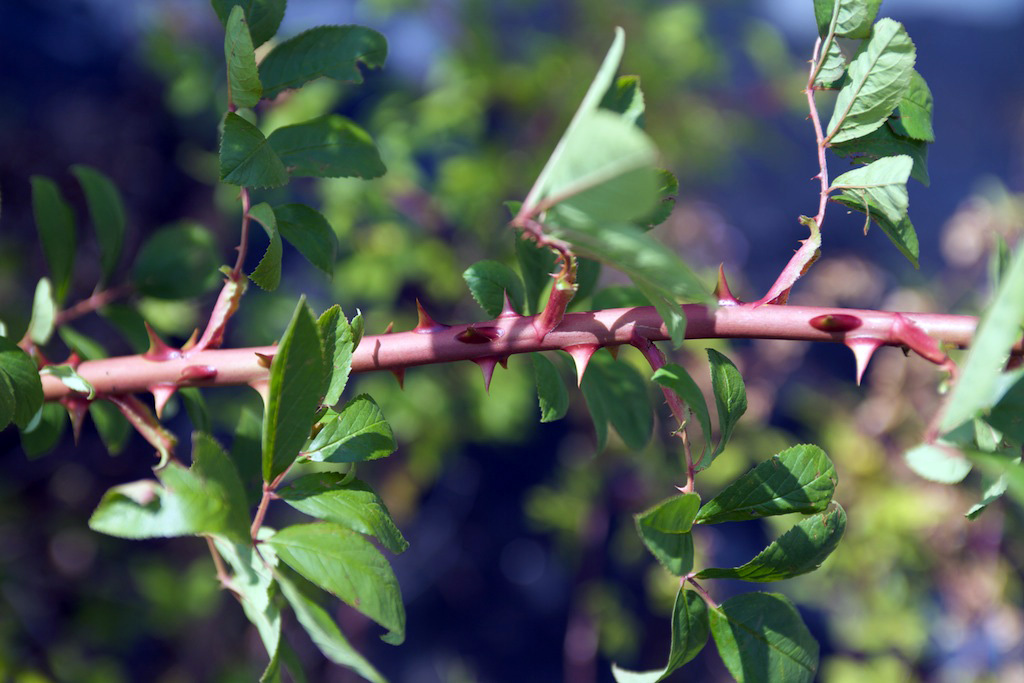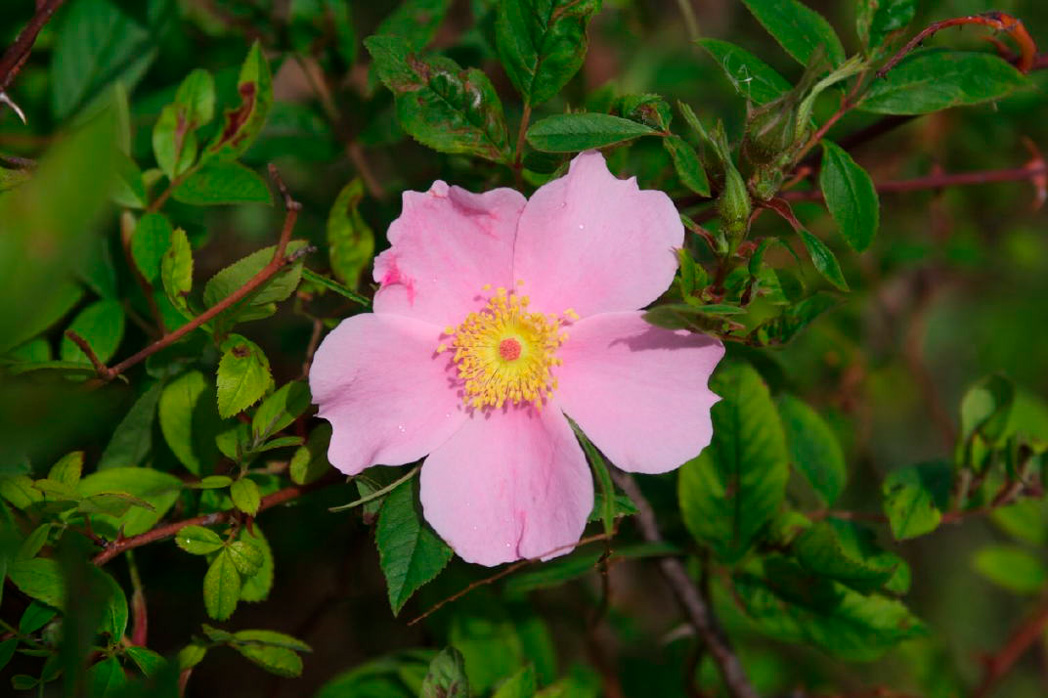Swamp rose
Pictured above: Swamp rose (Rosa palustris) by Malcolm Manners (CC BY 2.0). Click on terms for botanical definitions. View post as a PDF.
Swamp rose (Rosa palustris) is a deciduous flowering shrub found along river and stream banks and in floodplain swamps, freshwater marshes and wet ditches. Its bright pink flowers bloom in late spring through early summer and attract a variety of pollinators — especially native bees. Its fruits, which may persist through winter, are consumed by birds and small mammals.
The bright to pale pink flowers have five petals and numerous yellow stamens. Beneath the petals are five bristly sepals. All arise from a cup-shaped, glandular hypanthium where nectar is produced. Flowers may be solitary or born in clusters. Leaves are dark green and odd-pinnately compound with five to nine leaflets. Leaf arrangement is alternate. Petioles have hairy stipules. Leaflets are elliptic with finely to sharply toothed margins. Stems are reddish-brown, glabrous and armed with hook-like prickles that are often mistaken for thorns. (Prickles are outgrowths of the stems’ outer layer, while thorns are modified stems.) The fruit is an aggregate of achenes encased in a fleshy red hip.

Like most roses, Swamp rose’s petals and hips can be used to infuse liquids such as syrups or vinegars, and to make wine, tea, jelly or syrup. Rose hips are an accessory fruit that form after pollination. They are high in vitamin C.
Family: Rosaceae (Rose family)
Native range: Central panhandle, north and central peninsula
To see where natural populations of Swamp rose have been vouchered, visit florida.plantatlas.usf.edu.
Hardiness: Zones 8A–9B
Soil: Moist to wet, acidic soils
Exposure: Full sun to partial shade
Growth habit: 6–8′ tall and spreading
Propagation: Cuttings, seed (may need scarification)
Garden tips: Swamp rose spreads by underground runners and can form thickets. Do not plant where its thorn-like prickles will pose a problem.
Plants are occasionally available from nurseries that specialize in Florida native plants. Visit www.PlantRealFlorida.org to find a nursery in your area.

